LEICAFLEX SL 2 and 50mm SUMMICRON-R f2
Top station wagon for well under US$ 1,000
The LEICAFLEX SL2, which was delivered between 1974 and 1976, is still regarded by experts as the best LEICA SLR camera of all times. Point.
At the same time, it is today the cheapest entry into the LEICA world. I bought the camera shown here in top condition for US$ 400 on eBay in December 2019. And the LEICA 50mm f2 SUMMICRON lens for only US$ 299 !
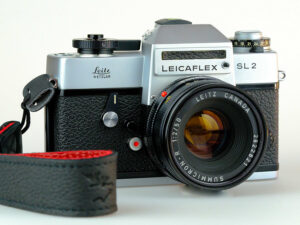
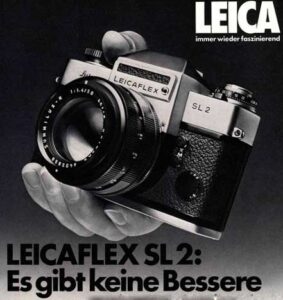
LEICAFLEX SL 2
When the LEICAFLEX SL2 came onto the market, LEICA believed that the SLR cameras (DSLR) would replace the old rangefinder cameras from their own company: "Es gibt keine Bessere" (There is no better one, see ad). The view directly through the lens made it easier to focus and ended the problems with the faded-in frames in the rangefinder cameras, which were also not or only to a limited extent compatible with extreme wide-angle lenses and with longer focal lengths. In addition, the trend across brands was clearly towards a single-lens reflex camera.
The new R-bayonet also provided the LEICAFLEX cameras a significantly larger diameter compared to the M-bayonet, which gave the engineers at LEICA more freedom for lens construction and thus enabled the calculation of better lenses. Consequently, LEICA positioned the cameras with the R-bayonet internally and also in their advertising over their own rangefinder cameras with the M-bayonet.
LEICA 50mm SUMMICRON-R f2 II
And also the lenses were better. Probably the world's most famous LEICA ambassador - the Dane Thorsten von Overgaard - is not only concerned with the photographs that can be taken with LEICA lenses, but also with their technical and optical characteristics in great detail. He writes the following about the Leica 50mm Summicron-R f/2.0 lens
"The world's best lens with a focal length of 50mm, the Leica 50mm Summicron-R f/2.0 (No. 11 215) was designed by Dr. Walter Mandler in 1976 and produced until 2009. It is larger, but otherwise very similar to the Summicron-M (Version IV, No. 11826); the M version of the 50mm Summicron, designed by Dr. Walter Mandler in 1979, is a scaled-down version of the R version, and is still produced today as a low-cost standard lens ($2,295).
The world's best lens with a focal length of 50mm - the LEICA experts agreed on this - was not an M lens, but this one from the R bayonet series!
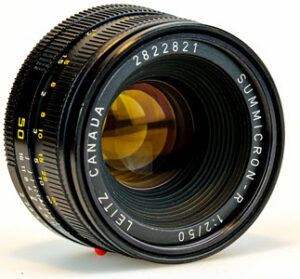
Here is the link to the English text on his website. His YouTube-Channel is also worth a visit, but be careful: it's addictive!
WHY LEICA DISCONTINUED THE PRODUCTION OF THEIR BEST CAMERA IN 1976
So, the best camera with the best lens - why would anybody want to end that success story voluntarily?
At the time, LEICA was struggling with two serious problems: on the one hand, the cameras from NIKON and CANON had a considerable technological advantage, and on the other hand, the LEICAFLEX SL2, which was already twice as expensive, had to be priced significantly below the production costs, in order to stay competitive. It was hoped to make up for this loss by selling the lenses, which were already priced in at an elite level, and thus still being able to make profits.
However, this calculation did not work and so LEICA had to end this ruinous strategy after three years (1974-1976) and over 25,000 LEICAFLEX SL2 cameras sold.
The successor of the LEICAFLEX SLR cameras was the R-series, developed together with MINOLTA, starting with the LEICA R3 in 1976.
About the advantages and disadvantages of the LEICAFLEX
Anyone who - like me - has always photographed with SLR cameras from the start would usually no longer want to do without a direct view through the lens. With rangefinder cameras, you look through a small window into which the framelines of the corresponding lenses are displayed. Depending on the camera, photography is only possible from 28 - 90mm. More extreme wide-angle or telephoto lenses are not framed correctly. In addition, the best and brightest lenses, such as those from the NOCTILUX series, block the field of vision in the lower right area - then you can only look at your own lens through the viewfinder on the right, the field of view is reduced.
Lenses of all focal lengths from the R-Mount series can be used on the LEICAFLEX and I always see what will later get in the photo. I can also have the depth of field shown when I press the button provided. Last but not least, it should be mentioned that the sound that the shutter makes does not sound as good and full - and yet so subtle - with any other camera as with this one. The above-average use of material in this camera dampens the noise more than in lighter cameras that vibrate (clatter) when the shutter is released. Like the rich sound of the door of a luxury sedan.
On the other hand, the M-cameras are lighter, smaller and, of course, more suitable as easily stowable "always-on-camera". And the new M lenses can be used. And an M is an M!
Prices of the R lenses and the LEICAFLEX SL2 camera
Since the production of the SLR cameras with the R-bayonet was discontinued in 2009, the R-lenses have been excluded from further development. Although LEICA manufactures an adapter for R to M bayonets, that's a "no go" for purists because the lenses are bigger and also weigh more than the native M lenses.
As a result, the R lenses are now also much cheaper than the M lenses. Often a thousand dollars and more.
Using the example of the 50mm Summicron-R f2 II discussed here:
I paid US$ 299 for my copy at the end of 2019 (condition A- / B +). That's about a third of what you would have to pay for the same (and not quite as good!) lens with an M-mount.
And more so with the cameras:
I paid four hundred dollars for my LEICAFLEX. An M camera of the same age in the same condition would have cost at least five times as much - if not more.


Quality
It is really no wonder that the construction of this LEICA camera caused losses at the time. A piece of German engineering was created here with great effort and also implemented camera by camera in the production.
The LEICAFLEX SL2 is built like a tank, very solid and robust. This is also noticeable in the weight, 770 grams for the case.
LEICA still offers service for these cameras today. In the unlikely event that something breaks, you can send it in. But I bought a second copy, just in case:
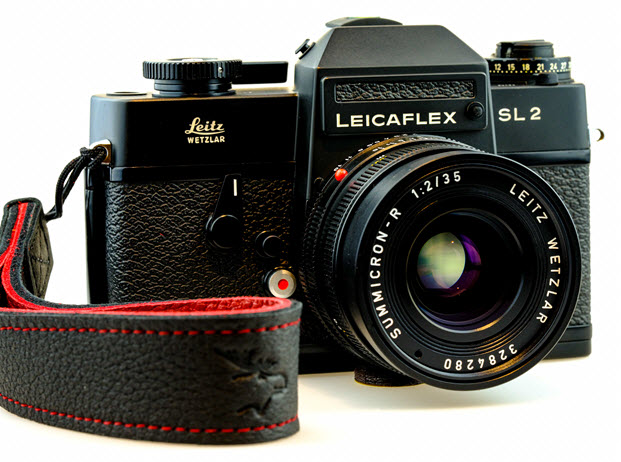
The black SL2
I was able to acquire this Leicaflex from a collector's stock. It came in original packaging and has probably never been used - at least it has no traces of use. In addition, the lettering "Leitz" and "SL2" are still white; due to UV rays these letterings normally turn yellow. The lettering "LEICAFLEX" can easily be replaced as a spare part. Therefore it is white on many cameras, although the lettering on the left and right side of the camera is yellowed.
The black version costs much more than the silver one, and the black lacquer is much more susceptible to scratch marks - as you can see on most cameras offered for sale on eBay. This one was really a stroke of luck!
On the camera is the 35mm f2.0 SUMMICRON-R, which is described below.
IMPORTANT
At that time, LEICAFLEX SL cameras were designed for 1.35 volt batteries. The camera has two battery slots, one on the bottom and one on the front. However, since these 1.35 volt batteries contained mercury, they were banned. Since there are no 1.35 volt batteries available today, 1.5 volt batteries (type PX 625 A-G-U) have to be used.
As a result, the light meter gets more power than the manufacturer intended and therefore does not indicate correctly anymore. Either one has to send in the camera in order to have it readjusted or one sets the ASA (DIN) one level higher. With a 100 ASA film, this means 200 ASA. This is not 100% accurate, but the remaining small deviations can easily be corrected in post - if the lab hasn't already compensated for this when developing the film. It's no problem, you just have to know, otherwise the first film will not be exposed at its best.

What serial number should the 50mm SUMMICRON-R f2 have?
This lens is available in two versions - Mark I and Mark II. However, this additional designation is not displayed on the lens itself and so it can only be derived from the serial numbers.
Leica 50mm Summicron-R f2 I
Years 1964 - 1976, Article No. 11 228
Leica 50mm Summicron-R f2 II
Years 1976 - 2009, Article No. 11 215
As can be seen in the photo, my lens has the serial number 2 822 821, so it is from the year of construction 1977 (serial numbers 2 809 401 - 2 880 600).
Actually, there should be a clear difference between these two versions on eBay, depending on whether they have a serial number of under or over 2 809 401 - because the newer MARK II lenses are better. But since many do not pay attention to the serial numbers, there is almost no price difference. Thus the purchase of the older variant due to a cheaper price is not recommended!
Lists of year of construction and serial numbers
Before you buy a camera or lens, you should definitely check the serial numbers to see when they were made.
- cameras - Leica-Wiki
My LEICAFLEX SL 2 has the serial number 1441711 and is assigned to the 1975-1976 production cycle in the wiki list. - lenses - Leica-Wiki
The serial numbers of the lenses are very important because the lenses were sold under the same name in different versions, and the latest versions are often the best. - LEICA Kompendium by Thorsten von Overgaard
This list has been researched very carefully. Here you can find information about all cameras and lenses, including the article numbers. - IMPORTANT
The LEICAFLEX SL2 requires so-called 2-cam or 3-cam lenses, only then will the information be correctly transmitted to the camera's exposure meter. LEICA has often retrofitted old 1-cam lenses with 2- or 3-cam, so even very old lenses can have the correct connection format. Caution: The brand new R lenses with ROM contacts can only be attached to the LEICA R cameras - not to the LEICAFLEX! There should be 2-cam or better 3-cam in the name of the lens, then everything is OK, if it says ROM, then stay away!
You can confirm that here >>>
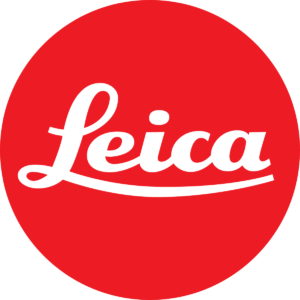
A video of the LEICAFLEX SL2 with the 50mm Summicron-R f2 II
Very good videos on analog photography are published on the YouTube channel "Analog Insights". This video presents the LEICAFLEX SL 2 in detail and shows its potential with sample photos:
Which lenses should you buy?
Actually you don't need any other lens besides the 50mm. Actually.
The focal length of 50mm is actually an all-rounder, a few steps forward or backward and the image section fits. Portraits, architecture, street photography, landscapes.
Landscape photography? Also works - nowadays panorama shots can be easily combined in Lightroom & Co.
If you read the reports from photographers, you hear again and again that a lens crystallizes out with which the most photos are taken and that additional focal lengths, especially in the telephoto range, often remain at home - too large, too heavy and unnecessary, if you take a few steps closer.
(Click here for an example)
With this 50mm lens there is also the fact that the quality is so high that you can not easily replace it with another one without losing quality. This is also what this young photographer thought when he preferred to buy a good camera with a fixed focal length rather than spread his money over many mediocre (zoom) lenses.
If you suffer from GAS (Gear Acquisition Syndrome), Thorsten von Overgaard can provide you lots of information on many other lenses.
Scroll far down on his website, there are references to macro and telephoto lenses, bellows and zooms.
The 35mm SUMMICRON-R f2 II
The 35mm focal length makes sense. If you take pictures in a narrow alley, you may not be able to take a step back. But here we leave the low-price sector: This lens alone costs more than the camera and the 50mm lens combined. This lens was also available in two versions - Mark I and Mark II.
Leica 35mm Summicron-R f2 I
Years 1972 - 1976, Article No. 11 227
Leica 35mm Summicron-R f2 II
Years 1977 - 2009, Article No. 11 115
This version was delivered from serial number 2791417 onwards
As with the 50mm lens, the newer version is recommended. If you don't want to spend as much, you can switch to the Elmarit lenses with 35mm or 28mm f2.8, but that's not the same quality anymore.

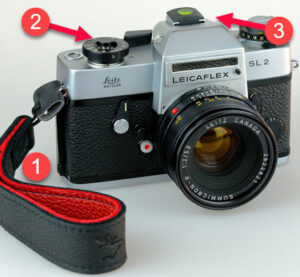
Customize the camera
On the photo of my SL2 you can see a few useful accessories:
- Wrist strap by EDDYCAM (1)
EDDYCAM produces its very noble items for carrying cameras all out of moose leather. This is particularly soft and very pleasant on the skin. I find the combination of black outside and (Leica) red inside particularly suitable for LEICA cameras. But there are many other possible combinations. - Shutter release button(2)
With the SL2, the shutter release button is slightly recessed in the setting wheel for the shutter speeds. The sink does not look that good either, so you simply screw a release button into the thread for the remote release. This way I can keep the camera steady when it is released. Is available on eBay in all colors, just enter the search term "trigger button". - Spirit level (3)
The "cold" hot shoe of the SL2 is also not a beauty. It is called "cold" because it has no contacts that could transmit information from a flash to the camera. The spirit level looks better in my eyes than the naked hot shoe and is useful when the camera is on the tripod and you would like an orientation for the horizon. There are eBay, search terms "spirit level" and "hot shoe".
HOLLYWOOD and the LEICA R lenses
Some lenses from the R-bayonet series have gained a lot of value in recent years. The reason is that you can shoot very nice videos with them, with a unique look that cineastes appreciate very much.
For example, a zoom lens, which was more likely to be found on the lower shelf at LEICA as an ELMARIT lens, has increased from a few hundred dollars to more than eight thousand dollars recently: the Leica 28-90mm Vario-Elmarit-R f / 2.8. The same applies to the Leica 35-70mm Vario-Elmarit-R f / 2.8. Greetings from Hollywood.
Other R lenses are also becoming more and more in the focus of directors, including the SUMMICRON-R lenses discussed here. The cameraman Daniel Haggert describes this development in his blog.
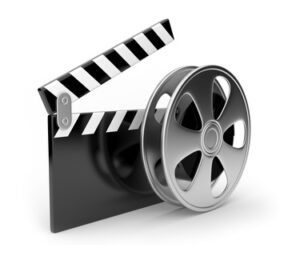
CONCLUSION
You can still (!) buy a LEICA camera plus lens for less than US$ 1,000, which in this combination gives you everything in quality and Leica look that you could wish for. As described here, both the LEICAFLEX SL2 and the 50mm Summicron-R f2 lens even have advantages over the much more expensive M equipment.
Of course you are not as "hip" with the SL2 as with an M camera. Less informed contemporaries suspect that the M vintage cameras are better and more expensive - and are only right with the latter.
On the other hand, the M series is of course continuously being developed further. In recent years, some remarkable optics have been added to the range. However, prices are up to US$ 12,000 - per lens and not everyone perceives these newly developed lenses as progress. The hunt for more and more sharpness in order to be able to score higher and higher marks in the tests in the specialist journals can ultimately be at the expense of the photographs. LEICA specialist dealer Alexander Görlitz describes this very well in his blog >>>
The SL 2 offers a very high quality for very little money (always compared to other LEICA equipment), and also a certain understatement. From experts there will be an appreciative smile for this camera on encounter, for a photographer, who understood and then consciously chose this vintage camera.
And despite all understatement - after all, a LEICA remains a LEICA !
